Matador Network's Blog, page 1186
January 9, 2019
Norway’s fanaost is the best cheese

If you love cheese but always stick to the typical European cheeses we all know and love, then you’re missing out on the best cheese in the world. A family-run farm in Norway holds one of the most prestigious titles in the cheese-making world: overall winner of the World Cheese Awards.
The winning aged gouda is called fanaost, and is made by Norwegian cheesemaker named Jørn Hafslund on the Ostegården farm. Fanaost beat out 3,472 cheeses from around the world to claim the title. With a herd of just 12 cows, Ostegården is the smallest dairy to win the competition in the World Cheese Awards’ 30-plus-year history.
Biting into a crumbly chunk of two-year-old fanaost, it’s easy to see why the cheese won over the judges. I’m hit by a powerful punch of umami, and the rich, savory taste lingers on my tongue long after I’m done chewing. Hafslund told me the secret to fanaost’s success is partly due to the local landscape that those 12 cows roam. Ostegården is situated by the side of a fjord, in an area of rich pastureland.
“We have up to 14 types of grasses here, all with their own special flavours,” Hafslund said. “This gives our milk a unique taste.”
Good grass for the cows means good milk, and good milk means good cheese. The judges at the World Cheese Awards took note of the cheese’s origins, saying that it “really delivers a sense of place.”
How the best cheesemaker in the world got started

Photo: Ostegården
Hafslund and his family started making cheese around 12 years ago as a side project to use up some of their farm’s milk supply. The farmer, a wry man in his mid-60s, said the process has been a form of “adult education.”
“You never stop learning,” Hafslund said. “There has been so much to take in, and to get our heads around.”
The family doesn’t just make fanaost. Their small farm also produces a camembert-style cheese, brie, and chili and pear jam.
It’s been “a bit too much fun,” he had said with a rueful smile. He’s due to retire soon, and is already taking steps to hand the business over to his sons.
Winning the top prize in the World Cheese Awards was “the experience of a lifetime.” The awards were presented after a day of blind tasting, which took place in Bergen, Norway in November 2018. The cheeses were sampled by 230 judges from 29 countries, who nosed and sorted them into bronze, silver, gold, and super gold categories.
Of the 78 super gold cheeses, 15 were from Spain; 13 from Italy; nine from the UK; eight each from the US and Norway; five from Austria; four from France; two each from Switzerland, Denmark, South Africa, Ireland, Croatia, and the Netherlands; and one each from Sweden, Estonia, Belgium, and Israel.
Eventually, the competing entries were whittled down to a shortlist of 16 cheeses. The merits of those cheeses were debated by a group called the Super Jury in front of a live audience. It was made for TV drama, but for cheese lovers. A French sheep’s cheese called Ossau-Iraty and a Norwegian brown cheese called Helfeit, Brun Geitost — Tinntradisjon were a few close favorites. Fanaost, however, emerged the overall winner.
“I have no words,” Hafslund said when he was crowned as the winner. “Our herd of 12 cows produces nice milk to make this Dutch-inspired fanaost cheese, which we have been making for 12 years. Cheese makers here look out for each other and work together, so this is for Norway!”
Norway has some of the best cheese in the world

Photo: Ostegården
This isn’t the first time a cheese from Norway won the global competition. In 2016, a blue cheese from the country’s Tingvollost dairy claimed the top prize. Hafslund believes that Norway’s success may come down to strong partnerships between local cheesemakers.
According to him, “Dairy owners here look out for each other and work together. When we have problems, we help each other out.”
This cooperation doesn’t just extend to other dairies. Hafslund has also partnered with local brewers to put on shared food and drink events, and has worked with hotels that want to give their guests a taste of Norway.
He sees collaborations like this as a vital activity for any business. “Working together is the key to success,” he said. “That’s what I believe.” 

More like this: The 12 most iconic cheese dishes from around the world
The post This Norwegian cheese is officially the best in the world appeared first on Matador Network.

Best places to find fossils
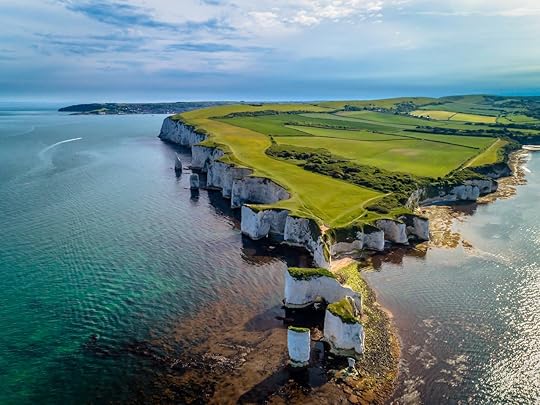
Combing the Earth for million-year-old fossils is a job many dream about but few actually pursue, but the good news is that it’s surprisingly easy to pull off as a hobby. A number of sites across the United States and the United Kingdom welcome amateur fossil hunters, as well as select spots across the globe. Countries like China, Argentina, and Morocco are rich with ancient remains though strict regulations can make excavations and even surface collection difficult. While above-board tours are worth looking into no matter where you’re headed next, be it Europe or Oceania, stick to these six spots for hassle-free fossil hunting and viewing in some of the most fossil-rich sites on the planet.
1. Burgess Shale, Canada
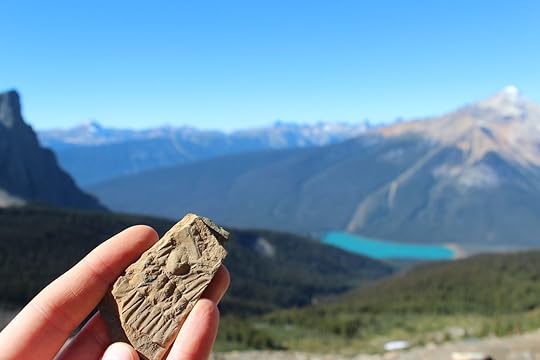
Photo: NorthStarPhotos/Shutterstock
Collecting fossils from national parks and other protected areas is strictly prohibited in Canada, but fossil lovers would be remiss to overlook the Great White North in their quest for petrified prehistoric organisms. Some of the most fertile ground for fossils can be found in Alberta and Ontario, but there are significant deposits in almost every province. Among them, the Burgess Shale in the Canadian Rockies of British Columbia stands out for its exceptionally well-preserved soft-bodied fossils, which have led to major revelations about ancient organisms and helped earn the Canadian Rocky Mountain Parks a UNESCO inscription in 1984.
Amazingly, thanks to the Burgess Shale Geoscience Foundation, these groundbreaking fossils can be seen up-close by the public. The foundation hosts two guided hikes through the otherwise closed fossil beds, neither of which are for the easily exhausted. The 11-hour, 14-mile round-trip excursion to the Walcott Quarry takes fossil lovers up 2,710 feet of uneven terrain, and the price is almost as steep at $126 per person.
If you’re planning a family adventure, opt for the Mount Stephens trek instead, which still manages a 2,610-foot ascent in just five miles out and back and costs between $44 and $99 depending on the age of participants. The seven-hour trek is hardly a cake walk, but the wealth of easily spotted trilobite fossils here makes it ideal for kids.
2. Calvert Cliffs, Maryland
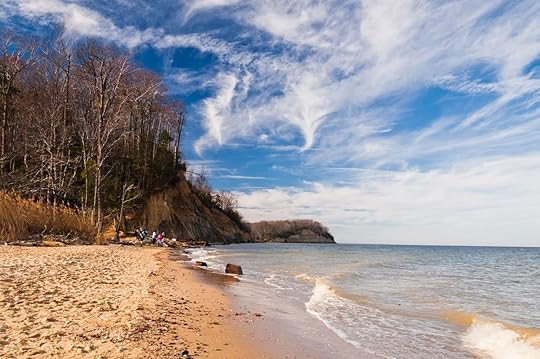
Photo: Jon Bilous/Shutterstock
Calvert Cliffs State Park spans 24 miles of the western end of Chesapeake Bay where the cliffs have been accumulating fossils since the Miocene era as far back as 20 million years ago. The area was submerged in warm seawater at the time, making fossilized shark teeth and marine fauna the big draw here, including crocodile, porpoise, whale, oyster, and sea turtle remains. If you’re lucky, you might even stumble across fossils belonging to a mastodon or peccary, ancestors of today’s elephants and pigs respectively, or those of massive, extinct birds whose wingspans measured up to 20 feet across. In total, the fossils of more than 600 species have been collected at the Calvert Cliffs, the largest Miocene fossil deposit on the East Coast.

Photo: NReiher/Shutterstock
The best place to hunt here is at the end of the red trail, a 1.8-mile stretch leading from the parking lot to a fossil-filled beachfront. Equipment like shovels and sieves are permitted on the beach, but collecting fossils from and directly below the cliffs themselves is prohibited, as well as dangerous given the likelihood of landslides.
3. Jurassic Coast, United Kingdom
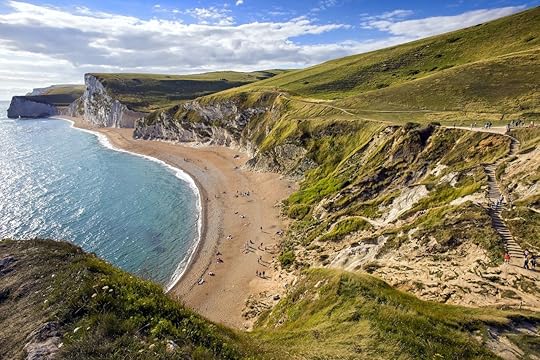
Photo: Fulcanelli/Shutterstock
If the name wasn’t indication enough, the Jurassic Coast is rich with fossils. While the UNESCO World Heritage site covers 95 miles of English Channel coastline from Devon to Dorset, budding paleontologists should set their sights on Charmouth where guided fossil-hunting walks are organized by the Charmouth Heritage Coast Centre. The center itself is a great source of information for the sort of fossils you’ll find along the Jurassic Coast, most commonly extinct mollusk and marine species. Many of the species found here are ancient relatives of modern-day squids, clams, sea slugs and snails, octopuses, and cuttlefish.

Photo: Mark Godden/Shutterstock
Fossil hunting can be a controversial hobby, but it’s actually encouraged here as whatever relics aren’t collected are likely to be lost to the sea forever. You’re allowed to keep whatever fossils you find (transporting them between countries is a separate issue) though the site asks that all discoveries are disclosed for record-keeping purposes. Just be sure to stick to the beach and stay off the cliffs — climbing here is dangerous. You can read more about the rules of fossil collecting on the Jurassic Coast here.
4. Stevns Klint and Møns Klint, Denmark

Photo: LMspencer/Shutterstock
Stevns Klint is a UNESCO World Heritage site spanning nine miles of white chalk cliffs on the Danish island of Zealand. Evidence of the Chicxulub meteorite that’s said to have wiped out the dinosaurs around 65 million years ago abounds here, contributing to its heritage status. Stevns Klint is the first fossil site most people think of in Denmark, but it actually comes in second for fossil hunting. First place goes to Møns Klint on the island of Møns, south of Zealand, which has just under four miles of chalk cliffs and is teeming with fossils. Seriously, you’d have to try pretty hard not to find petrified urchins and belemnites, relatives of present-day cuttlefish, here.

Photo: Kim Kjell/Shutterstock
Guided tours of the cliffs are available, but you can also opt to forage for fossils on the beach below. The best routes for collecting are the 1.7-mile northern circular walk from the Geocenter Møns Klint up to the highest vantage point on the cliffs and the 1.4-mile southern circular walk that ends up right on the beach. You can arrange tours of the site through the geocenter, which also has interactive and educational exhibits for kids.
5. Joggins Fossil Cliffs, Nova Scotia, Canada

Photo: V J Matthew/Shutterstock
Like the Burgess Shale, the Joggins Fossil Cliffs have been recognized by UNESCO for Outstanding Universal Value due to the rare fossils found there. And much like tours of the Burgess Shale, the visitor focus here is on viewing rather than collecting. The more than 100 fossil species in Joggins date back to the Carboniferous period of around 300 million years ago, sometimes referred to as the Coal Age due to the emergence of coal beds during that time. The most impressive fossils found here belong to ancient amphibians and reptiles, including the remains of Hylonomus lyelli, a lizard-like creature and the earliest known reptile. As the area was covered in primeval forest way back when, petrified flora also abounds.
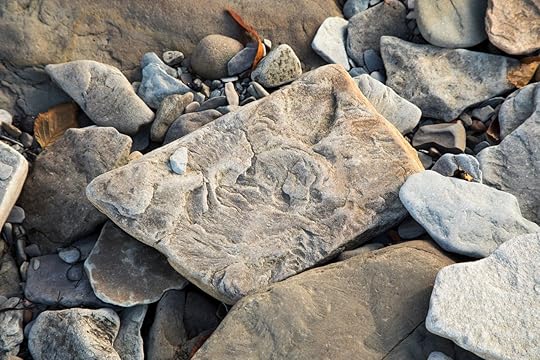
Photo: karenfoleyphotographer/Shutterstock
If you want to learn more, book a beach tour with a knowledgeable guide, ranging from 30 minutes to four hours at $10.50 to $75 per adult. You can also opt to tour the Joggins Fossil Cliffs independently, granted only qualified paleontologists with Heritage Research Permits are allowed to collect and keep their finds. Apply here if you have the proper qualifications or else start planning a visually astounding visit to Joggins.
6. Naracoorte Caves, South Australia
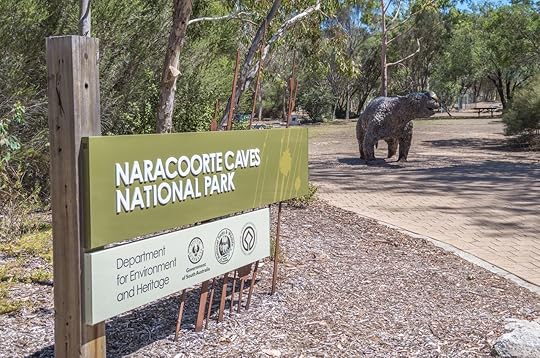
Photo: Sean Heatley/Shutterstock
This karst cave system in South Australia has been deemed one of the top 10 fossil sites in the world by UNESCO. Giant marsupials, monitor lizards, and kangaroos once roamed the area, leaving behind fossils that help explain significant stages of evolution. Overall, the Naracoorte Caves are as rich with Pleistocene-era vertebrate fossils as it gets. Many of these ancient creatures have been fully excavated and are now on display within the cave system while others remain preserved in the limestone. Take a guided or self-guided tour of the Victoria Fossil Cave, the most fossil-dense, as well as the Alexandra Cave, known for its stalagmite and stalactite formations. Entrance to Naracoorte Caves National Park is free with guided tours starting at $20 per adult.

Photo: Naracoorte Lucindale
Before you leave, stop by the Wonambi Fossil Centre to see recreations of the massive marsupials that once called South Australia home. It’s a less hands-on fossil hunting experience, but it has the largest number, most diverse, and best preserved fossils of its kind anywhere on Earth. 

More like this: Archaeological digs around the world you can actually partake in this year
The post The best places in the world to go fossil hunting appeared first on Matador Network.

Reptile bar in Tokyo

If you’re sick of the traditional bar scene, Tokyo’s Bar Yatonokami might be the change you’ve been looking for. Just west of Tokyo’s city center, this bar’s aesthetic resembles a shady club, with blue fluorescent lights, pictures of reptiles covering the walls, and an attic-like second-floor location. When you open the door, you’ll be greeted by rows of reptile terrariums, home to over 100 creatures.
本日もオープン夜刀神!
雰囲気は変わってきましたが相変わらず、よくわからないモニター
脱皮中で汚いけれどご愛嬌
……なんだろ、これ pic.twitter.com/eQynsod5NV
— BAR 夜刀神-YATONOKAMI- (@yatonokami_0722) January 9, 2019
Bar Yatonokami — which translates to “Bar of the Night Sword God” — prides itself on its inclusive atmosphere. You don’t even have to be particularly interested in reptiles to feel at home here. According to Nishikawa, the owner, about 20 percent of his customers simply notice the bar’s unusual entryway and stairwell — covered in reptile photos — and stop in out of curiosity.
本日もなんとかオープン夜刀神
今年も残るところあと2日!
明日はガキ使見ながらダラダラ年越し会をいたします
皆さまゆるりとご参加下さいますと、僕が楽しいです pic.twitter.com/Se3ZcqyYv7
— BAR 夜刀神-YATONOKAMI- (@yatonokami_0722) December 30, 2018
Nishikawa is a strong advocate for people adopting reptiles as pets, insisting that any negative stigma is unfounded. Since they’re low maintenance, don’t make much noise, won’t damage your furniture, and only require food once every few days, he says they’re truly ideal companions.
Reptile cafes have become increasingly popular in Japan. In addition to Bar Yatonokami, there’s also the Reptile Cafe in Yokohama, the Reptile Cafe and Bar Arrive in Kobe, and the Reptile Cafe Again in Osaka. Some establishments serve food as well as drinks. While most cafes have rules regarding the handling of their reptiles, remember that since they’re not domesticated or social animals, they shouldn’t be handled for more than 30 minutes per day to avoid causing them stress. 
H/T: SoraNews24

More like this: The 13 coolest underground bars (literally) around the world
The post Tokyo’s reptile bar is an insane version of a cat cafe appeared first on Matador Network.

January 8, 2019
Why you need to go skiing in Lebanon
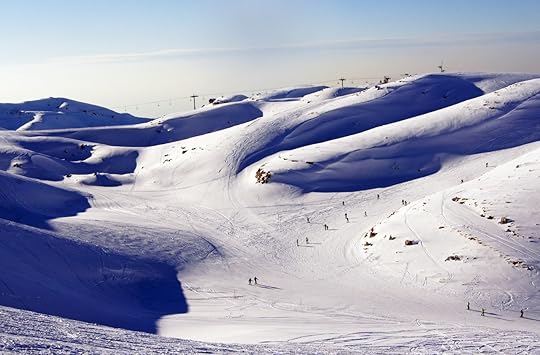
Lebanon is known for its rich culture, ancient ruins, medieval architecture, and meld of tradition and modernity. What most people don’t realize, however, is that this small Mediterranean country is also a skiing destination. Yes, there are mountains here, and Lebanon is often referred to as the “Switzerland of the East.” Here’s why you should ski in Lebanon and a round-up of the resorts you can do so.
Soaring peaks near the Mediterranean Sea

Photo: Jeff Merheb/Shutterstock
Skiing in Lebanon is one of the region’s best-kept secrets. Lebanon has six well-maintained ski resorts, all within a short drive from the vibrant capital, Beirut. While Lebanon’s summits reach over 10,000 feet, most resorts are in the more comfortable 7,000- to 8,000-foot range. With a combined total of 190 miles of groomed runs, you can find slopes for skiers of all levels.
Lebanon’s mountains begin their steep climb very close to the ocean. As a crow flies, the resorts are less than 20 miles from the Mediterranean, making for incredible sea views on clear days. You could tear up the snowy slopes in the morning, then shed your parka and head to the warm waters of the Mediterranean for an afternoon swim.
Nightlife and historic villages
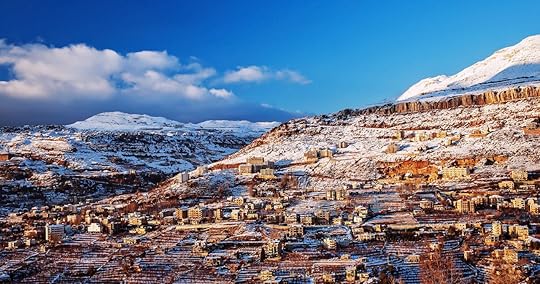
Photo: Anna Om/Shutterstock
While you could head down to the mountain for a dip, we recommend sticking around for the après-ski scene. You’ll find a variety of ski-in, ski-out accommodations, as well as options in the nearby villages. And few people know how to relax, enjoy good food, and celebrate into the night like the Lebanese. Beirut locals often drive up from the city just to enjoy the mountain air, dine at restaurants like Masaya Faqra, and hit up clubs in the alpine villages.
If you happen to stay out too late to ski the next day, the mountains here are also home to Roman ruins, caves, and working monasteries. Or you can spend the afternoon snowshoeing through ancient forests or enjoying long lunches in historic villages.
Mzaar Ski Resort

Photo: Mzaar Ski Resort/Facebook
Mzaar, Lebanon’s biggest and best-equipped ski resort, is also the closest to Beirut at just an hour’s drive. It has 42 slopes, 18 chairlifts, and 50 miles of ski trails. Lower slopes are wide and gentle, making them best for beginners. Experienced skiers should head to the upper peaks for more challenge or hire a guide from the ski school to take them to areas of fresh powder.
At Mazaar, you’ll have views of the Beqaa Valley to the east and, on clear days, Beirut to the west. The range of accommodations spans the luxury spa option, Intercontinental Mzaar Lebanon Mountain Resort; the moderately priced Urban Faqra Hotel right on a snowy hilltop; and Airbnbs. Besides skiing, at Mzaar you can also visit the ruins of a Phoenician temple and a Roman tower.
The Cedars

Photo: Mike Awwad/Shutterstock
Located in the country’s highest range, The Cedars is Lebanon’s oldest ski area. In good snow years, you can keep skiing here until late April at these elevations — which reach nearly 9,000 feet. More advanced skiers will appreciate the steep slopes and off-piste options. There are also easy groomers for beginners and lots of terrain for cross-country skiers. Options in the town of Al Arz include the White Cedars Hotel with its lovely mountain views, or you can stay at the basic Bauhaus in Bcharre.
The Cedars is known for its Cedars of God forest reserve, full of ancient trees, as well as its stunning views of the northern mountains and Kadisha Valley. When you’re not making tracks, explore the nearby monasteries, churches, and villages scattered throughout the valley. Bcharre is especially interesting as it was the home of Lebanon’s famed poet, artist, and novelist Gibran Khalil Gibran. The museum dedicated to him is a repository for his work and personal effects.
Family-friendly and exclusive options
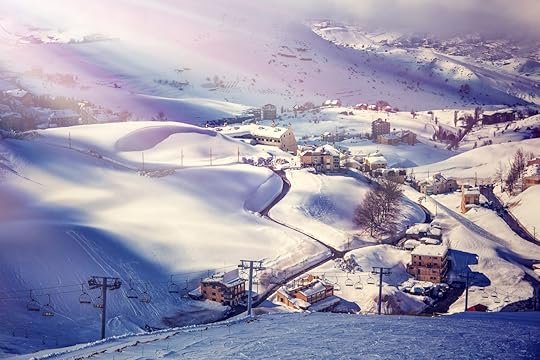
Photo: Anna Om/Shutterstock
Families choose Laklouk for its friendly ski school. The busy pedestrian village is a hub of activity with restaurants serving traditional Lebanese dishes. Nearby, the legendary cave of Afqa and the abyss at Balou Balaa, with its natural arches and waterfall, have attracted visitors for thousands of years. The village of Annaya is another popular destination as pilgrims stop here en route to the Monastery of Saint Charbel.
Qanat Bakish is known for its excellent snow quality and lack of crowds. Over half of the trails are suitable for beginners, making this a good spot to practice the basics and gain confidence. It’s a relatively small ski expanse with only 4.4 miles of terrain, so you can’t get lost. Or you can exchange your skis for snowshoes and trek up to the Cross of All Nations, the largest illuminated cross in the world. Be sure to check out the old village of Qanat Bakish itself, one of the best-preserved towns in Lebanon.
Both the Zaarour Club and the Faqra Club market themselves as private club destinations for families — although the Faqra Club stands out for being one of the world’s first truly private resorts. The emphasis at Faqra, whose tagline is “Life at the top,” is high-end exclusivity.
At Zaarour Club, it’s more about family-oriented fun. Anyone can buy a daily lift ticket to Zaarour, but the slopes are best for beginner and intermediate skiers and boarders. If you tire of those, you could try ski biking, sledding, and tubing. The only way to ski at the Faqra Club, situated on Mount Lebanon, is to stay at the L’auberge de Faqra, but we’re not sure how to actually secure a reservation there. No matter, there are lots of other wonderful places to ski in Lebanon. 

More like this: Why you need to ski in the Pyrenees’ La Cerdanya valley
The post Why you need to go skiing in Lebanon appeared first on Matador Network.

Why you should visit Nicaragua now

The signs at the beach bars and hostels along Playa Santana were a little misleading. Hotels and bars that didn’t look like they’d been touched in months were promising parties, happy hours, and imminent reopenings.
“Closed until summer,” said the black scrawl outside Taberna 99. It’s unclear which summer, exactly, the sign was referring to. Could be 2019. Could be 20-never.
“Back next season,” read the one hanging in back of Buena Onda Beach Resort. “Next” being a relative term.
“Beach party,” Waves & Dreams advertised, though the only “party” going on seemed to be between long-abandoned beach chairs.

Photo: Rancho Santana
These relics I saw while riding a horse along Nicaragua’s Playa Santana this fall were a little sad, reminders of a vibrant, albeit short, golden era of Nicaraguan tourism that peaked during 2017 and early 2018. For a brief moment, places like these thrived, and Nicaragua was the tourism darling of the Western hemisphere.
It was easy to understand why people fell in love with the country as I rode this stunning beach in the Rivas Department. Cascading Pacific waves crashed into the golden shoreline as majestic tropical mountains reflected the last light of the evening. The region is best known for being home to surf breaks like Panga Drops and Colorados and to the sprawling Rancho Santana, a private residence and luxury resort with five spectacular secluded beaches. Though the resort has remained open, it’s literally the lone beacon of light along this mountainous shoreline at sunset.
“The original reaction was, ‘Oh, this will pass soon,’” Tanya Lexin tells me at the bar at Rancho Santana. She has worked there for eight years, heading up its spa and fitness programs. We are the only ones at the bar, outnumbered by the staff about four to one. “Then it lasted a little longer than people were comfortable with. Then small little hotels, as soon as we saw tourism halt, they couldn’t keep their doors open, running that risk of when it might return. Some of our neighbors, it looks like they’re not opening anytime soon.”
From the brink of a boom to rock bottom

Photo: Rancho Santana
The cataclysmic crisis Lexin refers to is the civil unrest that befell Nicaragua in the spring. An unpopular proposal to roll back national pensions touched off massive protests in April, and the ensuing government crackdown splashed images of the military attacking protesters all over international news.
Countries around the world began branding Nicaragua with the dreaded Level 3 travel advisory — or the respective nation’s equivalent — advising citizens to seriously reconsider all nonessential travel.
This was bad news for a country that spent 20 years correcting its banana-republic image as an unstable, poor, and dangerous place. Just as it was finally on the brink of hitting the tourism bigtime, it plummeted back to square one.
“Last high season between November and April was spectacular,” says Hans Pfister, CEO of the Cayuga Collection, overseeing hotels in Nicaragua and Costa Rica. His company had to close one of its premiere resorts, the Jicaro Island Lodge, in the wake of the crisis. “There was talk of direct flights from New York and Madrid. It seemed like, OK finally, it only took 20 years, and finally, it’s happening. And then the crisis came, then we’re back to… it feels like we’re back 20 years ago.”

Photo: Rancho Santana
It wasn’t just luxury properties catering to big money out-of-towners who got hit hard. Hostels, the lodging of choice for advisories-be-damned surfers and backpackers, didn’t fare much better.
“We were running maybe 80 to 90 percent occupancy on average for the year,” says Muffadal Saylawala, the founder of the Casa Oro Group who owns the biggest hotel in the popular surf town of San Juan del Sur. “There were times where we just didn’t have enough beds. I was turning people away. This year, all through April and into October, we’d get excited if we had five people in the hostel.”
This was especially damaging to a country that was finally enjoying the economic spoils of tourism.
“This came out of nowhere,” Rancho Santana’s Lexin told me. “Everyone was like, oh, I just took out a loan to build my house or bought a new motorcycle or a car. People close to me went from having all parties in the family working to having one person supporting everyone.”
Though Rancho Santana stayed open during the crisis, laying off almost no employees, it was the exception. Many large resorts closed, most famously the Mukul Auberge Resort whose guests all fled during the crisis.
A country fights to show the world it’s safe.

Photo: Rancho Santana
Today, the unrest is for the most part over. But with foreign governments maintaining the elevated threat level warnings for Nicaragua, getting people to come back has been a tough sell.
“People have this image that there are tanks in the streets, it looks like a civil war,” says Pfister. “But what we have now is a country perfectly safe for tourism. There are no roadblocks, there’s nothing different than what it was before if you’re a tourist.”
This became explicitly obvious to me within five minutes of leaving the Managua airport. All the sensational news stories friends had sent me were gone from memory by the time I arrived at the Masaya Volcano. The national park seemed peaceful and open, the only smoke coming from inside the caldera. Outside the park, the streets were calm. People looked their usual Nicaraguan brand of happy.
“Nicaraguans, we’re a glass half full kind of people,” Rancho Santana’s Director of Guest Experience Alberto Marin told me. “We’re all about moving forward in a democratic way. For us, it’s all about working and having a smile on our face.”
Hiking to the top of the cliffs near Playa Escondida, watching the waves break below and gazing out at the stunning green mountains, it seemed incomprehensible that anyone could deem the place even remotely dangerous.
“It’s frustrating for me to open the [US] embassy site and see ‘Level 3, reconsider travel,’” said Lexin. “I’m like ‘Why are you doing that?’ It’s been so stable for so long now, and continuing to scare people off like that isn’t helping anyone.”
Pfister spoke with me shortly after he’d met with five European ambassadors to Nicaragua, urging them to drop their threat levels from three to two. Germany and Austria had recently lowered theirs, and the meeting was held in hopes others would follow suit.
“Our message right now is we’re here with open arms,” he said. “That’s all we can do right now, we cannot convince anybody. They have to realize that themselves. But that’s all we can do with a Level 3 in place.”
The bold few blazing the trail back
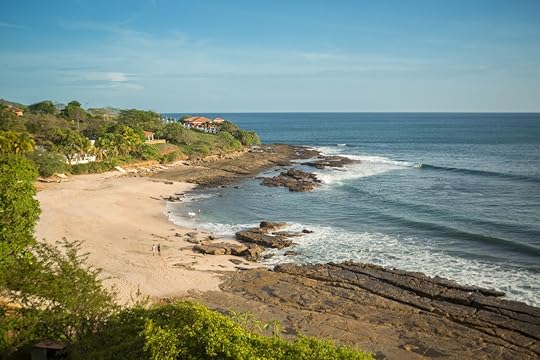
Photo: Rancho Santana
Pfister’s message seems to be getting through, if only to those who dig deep enough to find it.
“We had a couple from Virginia, and they went on the internet and the first thing they saw was the travel warning,” he said, discussing the first guests to return to Jicaro Island when it reopened in October. “But they said let’s look beyond that and researched what’s happening on the ground, and they were able to look through that and came anyway.”
Saylawala told me of an 80-year-old man from St. Louis he encountered at a bar in San Juan del Sur who asked why it was so slow compared to the year before. Completely unaware of the summer’s unrest, the man seemed almost angry it had kept anyone from coming.
“Politics?” He asked with a combination of confusion and disdain. “Well, that’s stupid. I don’t care about politics; politics are stupid too.”
Unsettled, a tour company that offers what it describes as “study abroad for grown-ups, without the classes,” is running its first tour of Nicaragua since the unrest this February in Playa Santana.
“We talked to our friends who run hostels and hotels, and they say it’s picking back up,” Unsettled founder Jonathan Kalan told me. “We haven’t seen as high of volume as our first trip, but people are excited to go anyway.”
The places that looked so sadly empty on my fall horseback ride are open again too. Crowds aren’t what they were, but people are trickling back in.
But trickling is the keyword. And as long as travel advisories and overblown media coverage persist, it will be a tough road back for Nicaragua, and the people who depend on tourism.
“It took us 20 years to get where we were, and it feels like we just got slingshot back,” Lexin says as the golden light covers Rancho Santana’s dining room. “I think it’s gonna take us another year to get back to where we were. Some say 10 years; some think somewhere in between.”
She takes another sip of her Sauvignon Blanc and looks out at the silver-blue water.
“Getting the threat level changed, that takes time. And it’s political,” she says. “The people want democracy, but you can’t just be like, tomorrow let’s have an election. It takes time. And we’re all watching. The world is watching. And it’s beautiful that there are enough people here who want democracy, and that feels great to me.” 

More like this: 10 traditional Nicaraguan foods the world should know about
The post After falling from the brink of a tourism boom, Nicaragua is ready to welcome the world back appeared first on Matador Network.

Kayak travel hacks best times to fly
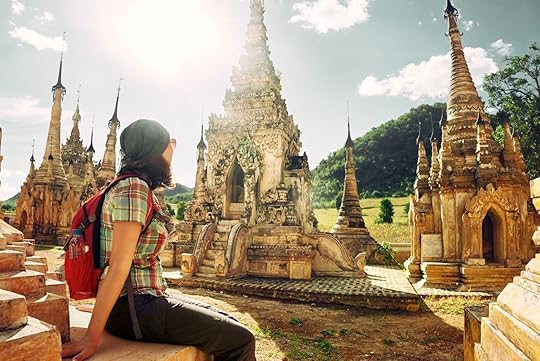
Getting tips on travel is kinda like getting dating advice from relatives at a wedding. Every time you look up, someone is offering some sage wisdom about how to time it right, avoid the pitfalls, and get the most for your money, so to speak. And listening to all of it gets you so overwhelmed that you just wanna say “forget it” and stay home with a bottle of Chianti and Netflix.
Of course, unlike with dating, the travel world has actual, quantifiable authorities who base their advice on more than astrological signs and rom-com plots — authorities like Kayak, the travel booking site that’s been tracking airfare history almost as long as your Aunt Shirley has been asking if you’ve “met anyone.” Last year, Kayak crunched an incomprehensible amount of data to come up with, by all accounts, the most comprehensive and user-friendly travel-hack guide to date. And it’s now an indispensable tool when planning any vacation.
If you’re looking to plan a trip, the guide leads you along breaking down destinations in different categories like “Beach,” “Trending,” and “Wallet-Friendly.” It even throws in some curated “Kayak Picks” if you’re looking for some inspiration. Under each category, you can pick from a number of destinations, like Mexico City under “Trending” or Houston (one of our favorite destinations for 2019) under “Wallet-Friendly.”
Once you select a destination, the guide shows you a handy bar graph with the median airfare to said city broken down by month. (Hotel rates are also broken down by month further down the page.) It also gives you a quick “Hacker Tip,” offering up some activity and dining advice, and finds the cheapest airfare from your home airport. It also gives a line graph representing how airfare to that destination fluctuates based on how far in advance you book.
You’ll also find a handful of food recommendations, activities, and weather reports at the bottom of the page.
Under its “When to Fly” tab, it also breaks down the cheapest places to travel each month of the year based on historical airfare data and will tell you how far in advance you need to book for different regions around the world. For example, Europe, Asia, and the Middle East all see the cheapest flights about six months out. So if those are on your summer travel wish list, start looking now.
North America, South America, and the Caribbean, however, have the best airfares a month out. So maybe hold off on booking your summer pilgrimage to Disneyworld for a minute.
Kayak’s guide will even craft a clever out-of-office message for your email based on stuff like how often you check your email and your favorite drink.
We’re not saying this is the be-all, end-all of travel advice, as all of the info in Kayak’s guide is predictive and, while generally accurate, is never a guarantee. But your odds of success with this are probably still a lot better than anyone your family tries to set you up with. And it’s definitely more fun to fantasize about. 

More like this: The 25 places you need to travel to in 2019
The post Kayak’s new Travel Hacker Guide has pretty much all the info you need to save money appeared first on Matador Network.

Tofu town in Korea for vegetarians

South Korea is famous for its tabletop barbecue and pork-heavy bulgogi. While delicious, it can make dining a significant challenge for vegetarians. The solution for a meat-free fix of kimchi and tofu is to head to Gangneung, a coastal city along the Sea of Japan that’s famous for its beaches, its tourist attractions, and, increasingly, its designation as “tofu town.” Also known for being one of the three primary locations for the 2018 Winter Olympics, Gangneung might just be the best place in South Korea for eating a vegetarian diet. Here’s what to expect — and what to eat.
A different taste for tofu

Photo: norikko/Shutterstock
In central Gangneung, you’ll find a street of restaurants called Chodang Dubu Village (not to be confused with the Chicago area restaurant bearing the same name). It’s a dream destination for vegetarians in South Korea who are craving a fix of guksu (noodles), bap (rice), or juk (rice porridge). The true focus in Chodang Dubu Village is right in the name, though. Dubu is Korean for tofu, and it’s literally the basis for this entire strip of restaurants in the heart of Gangneung. Follow your nose as you walk through downtown while restaurants process Korean soybeans on site from the nearby town of Samcheok-si for their tofu and the smells waft through the neighborhood.
The legend of Chodang Dubu dates back to the reign of the Joseon Dynasty in the 1500s, prior to the area’s takeover by the Korean Empire in 1897. A prominent Joseon political figure, Heo Yeop, settled in the area and was the first to make tofu with the local seaweed-infused water rather than salt. This makes it lighter than the commercial tofu you may be used to. If you’re sick of tofu and not willing to travel around the world for it, a trip to Chodang could re-inspire your taste for curdled soybean milk. It’s claimed that nowhere else in the world makes tofu in the same method.
Nearly 20 tofu-centric dining hubs make up Chodang, each with its own specialties but all coming together to form a tight-knit community. The tofu village as it stands in Gangneung originated in the 1970s as restaurants sought to recreate Yeop’s process, and handmade tofu is a source of immense pride in the neighborhood. Chodang Dubu Village is right in the heart of downtown Gangneung, a collection of palm-lined avenues surrounding gorgeously quaint eateries bustling with visitors from across Korea as well as Japan and China. The area is seeing increasing amounts of visitors from western countries, as well, thanks in part to publicity from the Olympics.
What to eat in Chodang Dubu

Photo: Nishihama/Shutterstock
Your first port of call is Wonjo Chodang Sundubu for a bowl of the namesake chodang sundubu. This restaurant has been serving the dish since the 1930s. It’s become a local specialty, built around tofu fermented with seaweed from the nearby coast that gives the tofu a distinct flavor. Kimchi comes on the side, and you’ll want to add a hefty amount of soy sauce to accent the flavor of the seaweed. The plate looks quite bland but offers vegetarians the often unavailable taste of the sea. Dubu-kimchi, simply kimchi with tofu, is equally popular throughout the neighborhood.
The next dish to try as you move through the village is sundubu jeongol. This is a soup made with the same tofu used in Chodang Sundubu, served spicy and hot-pot style. You can find it at most of the Chodang tofu shops, so take your time browsing the district and stop into whichever establishment beckons. If you’re able to stomach a third stop, try a curry dish with rice. The tofu served in Chodang is often described as having a “milky” taste to it, an accent complemented by the veggies and robust spiciness of Korean curry dishes.
Eating meat in Chodang Dubu

Photo: gontabunta/Shutterstock
If you’re traveling with a mixed group of vegetarians and meat eaters, Gangneung is one of those rare places where satisfying everyone in the party is easy to do. Gangneung has excellent seafood due to its seaside location, and many spots in tofu town even offer fish either as a main or an ingredient in soups, such as a spicy seafood pot called haemul jjim. Tofu is the star here, but it’s not the only protein to be found. You’ll find clams included in some tofu soups and dishes, including the popular sundubu jjigae, along with raw fish.
Travel tips

Photo: Sagase48/Shutterstock
To get to Gangneung, the easiest route is to take a 3.5-hour bus ride from Seoul. Once you’re there, note that many spots in Chodang Dubu Village focus on lunch and aren’t open for dinner. Though not true across the board, if you plan to do a food crawl, it’s best to do your rounds in the afternoon to make sure everything is open. A typical meal costs between 9,000 KRM and 15,000 KRW (about $8-10), and carrying cash makes everything easier for both you and the restaurant. Most spots have English menus though you may have to employ a bit of pointing to signal what you’d like to order as an English-speaking server is no guarantee. You can also take a guided tour of the neighborhood, which includes stops at some of the more popular spots.
Restaurants tend to get busy over lunch, but many have spacious dining rooms and are accustomed to getting people seated and fed quickly. Do yourself a favor and allow extra time if you have other stops on your agenda. There’s a lot of restaurants to get through in the area, and while there’s no need to try them all — that’s far too much soy for one trip — sharing plates with a partner will help you check more off the list. 

More like this: The 50 best US cities for vegans and vegetarians
The post This tofu village in Korea is a vegetarian’s dream appeared first on Matador Network.

Smartest countries in the world

This chart might be the best way to gain some bragging rights over your international friends. Or it might make you the butt of their jokes. Either way, we’ve all wondered what the smartest country in the world is, and now science has the answer. Vouchercloud has used various measures of historic, present, and future intelligence to determine the world’s smartest nations. It looked at each country’s number of Nobel Prize wins (past), IQ test results (present), and educational achievement (future) to make this ranking of the cleverest countries in the world.

Photo: Vouchercloud
It may come as no surprise that Japan ranks first in the world, with high scores across all three categories. It’s followed by Switzerland, China, the United States, and the Netherlands, which all scored consistently high. While the US came in 28th for IQ, its number one ranking for Nobel Prize winners helped boost its position on the chart. Nobel Prize wins also helped improve the ranking of the UK, which came in eighth. The UK placed 17th for IQ and 30th for education but had the second-most Nobel Prize winners.
Although Singapore came in last place among the countries listed, it’s only because it had the fewest number of Nobel Prize winners. It ranked first for IQ and education and looks poised to improve its ranking drastically in the future. 

More like this: 5 strange traditions that make Oxford University magical
The post The world’s smartest countries, according to science appeared first on Matador Network.

Where to travel by zodiac sign

Maybe you think astrology is stupid. Maybe you think it’s a bunch of hippie-dippy junk science people use to excuse bad behavior. “Well you should have known I was going to was going to cheat on you, Janet. I’m a Scorpio!”
Ok, well put that aside for a second. Because if you buy into astrology — if only for the time it takes to read your horoscope — it can be pretty entertaining. And sometimes, surprisingly accurate. Besides, even if you’re not into astrology, there’s a good chance someone you travel with is. So when deciding where to travel in 2019, perhaps taking the characteristics of your or your companion’s zodiac sign could lead to a perfect vacation. Whether you’re a globetrotting Sagittarius, an indecisive Libra, or a dark and sensual Scorpio, here’s where you should be traveling this year.
Aries: Set out on a road trip through Mongolia.
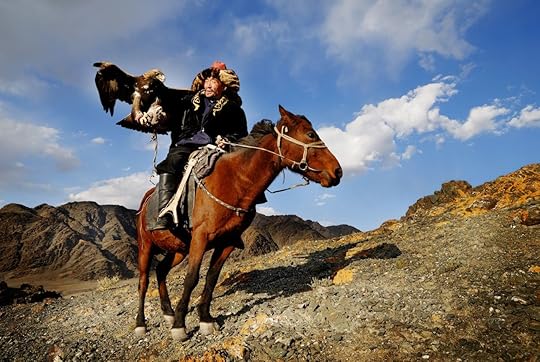
Photo: Rawpixel.com/Shutterstock
Once Aries sees a place on their friends’ Instagram, they’ve immediately lost interest in going. Because if Aries isn’t first, they’re last, and what’s the point of travel if you’re not blazing the trail for someone else? While Mongolia isn’t exactly undiscovered, it’s not exactly overblown Iceland either, and by being the first one of your friends to speed through the steppes and take selfies in the Khentii mountains, you’ll deeply please the peak-scaling ram within.
Flying in and taking a tour won’t be enough for thrill-seeking Aries. You need energy, competition, and speed. You like putting a remote destination in your GPS, seeing the estimated arrival time, and saying, “Challenge accepted.” And while we’d never tell you to speed through Mongolia like it’s rural Montana, the wide-open roads and vast stretches of nothing give you the chance for the high-speed road trip you’re looking for. Just remember, Mongolian highways aren’t exactly US Interstates. So be careful.
Taurus: Experience the finer things in life (at a great value) in Argentina.

Photo: Another Sun Photography/Shutterstock
You bulls are a bold lot, and while you’re never ones to waste money, you’re also not ones to go cheap on anything either. You want the best in the world, at a reasonable price, and Argentina gives you the energy, scenery, and refined culture you’re always seeking at a very responsible price. Here you can eat at the finest restaurant and drink the best wine — without getting a bill that’ll have you stomping your foot in anger.
Bulls also love the arts, and in the cultural capital of South America, you can wander the streets of Buenos Aires admiring miles of street art and stunning architecture. Once you’ve gotten your fill of the city, head south to Mendoza where you’ll sip fine wine and indulge in two of your other passions — mountains and photography. The most photogenic wine region in the world backs right up to the Andes Mountains, and as you spend your days composing shots with a glass of Malbec in your hand, you’ll wonder why it took you so long to join the rest of the herd.
Gemini: Go to the world capital of gossip in Los Angeles.

Photo: Chones/Shutterstock
If there’s one thing Geminis love, it’s a big hunk of juicy gossip, and LA is your prime steakhouse. Simply hanging out around Catch LA or Chateau Marmont for a few days will have you filling your Snap story with pictures of celebs and where they’re eating. And maybe even who their eating with. Take the TMZ Celebrity Tour and learn the art of gossip from the greatest ever. Or just belly up to the bar at Barney’s Beanery and eavesdrop on aspiring producers and directors to see what the “hot” new projects might be. Also, January to March is Awards Season, meaning you can do a little DIY red carpet reporting if you’re able to use your gift of gab to talk your way to the front. Or possibly even finagle your way into a D-list Oscars afterparty.
Plus, the golden beaches and snow-capped San Gabriel Mountains give you the perfect chance to channel the messaging forces of your ruling planet Mercury, sending beautiful vacation shots to your oh-so-jealous friends back home. Since it’s LA, you can spend your non-party-crashing time indulging in your other passions — obscure music and fast cars. And you might even have the bonus chance to talk your way out of a speeding ticket.
Cancer: Post up in a beach house in Maine.

Photo: Jo Ann Snover/Shutterstock
They say Cancers are ruled by the moon, but let’s be honest: You’re really ruled by your stomachs. And though a culinary trip to San Francisco or Paris might sound inviting, big, impersonal cities aren’t really your thing. You’d rather rent a house somewhere by the water, invite your best friends and family along, and create a home away from home full of gourmet meals and good times — where you don’t have to deal with tons of people you don’t like but can still eat well with people you love.
Mainers, like Cancers, also don’t much care for people they deem a waste of time. And, like Cancers, they’re intrinsically linked to crustaceans. So you can make big, fresh lobster meals in your beachside rental house, then when you’re tired of cooking spend the rest of your vacation sampling one of the best small food cities in America in Portland. Start with the daily specials a Duckfat then indulge in prime cuts at Timber Steakhouse. But be sure not to skip out on the potato donuts at Holy Donut. And when you need to retreat back into your shell, take a hike up to the top of Cadillac Mountain at sunrise to feel alone with nature. Just make sure you go on a weekday.
Leo: Get treated like the king or queen you are in Thailand.

Photo: Dirima/Shutterstock
Leos like to be treated like they’re the only one that matters. You’re the leader, the one in charge, and if everyone around you isn’t treating you as such, you really start to question your position in the jungle hierarchy. This is why you need to go to Thailand, where the southeast Asian service makes even budget travelers feel like a VIP. Rent a villa with a full staff near Phuket for about what a week at an American hotel would cost, and you and your friends will all bask in Leo’s regal glow.
Venturing into the city, you’ll find Bangkok is a place where a few dollars can get you first class everything. And since Leos hate hearing the word “no” — or rules at all, really — Bangkok will be an absolute paradise. If you can handle the chaos of mopeds darting past you and the loss of control you feel in traffic, you’ll find a city where whatever you want can be made possible — for a minimal price. And whether that’s shopping, fine dining, or some of the more, shall we say, personal pleasures, the entire city can be your oyster, Leo. Just make sure not to let your ego get the best of you.
Virgo: Take a highly organized trip through the Holy Land.
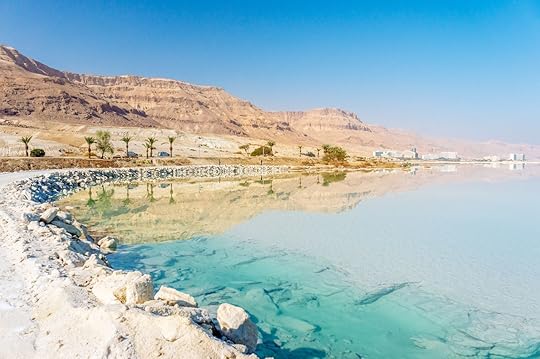
Photo: Dmitry Polonskiy/Shutterstock
Nothing makes a Virgo happier than having a strict itinerary and keeping to it. And while you’re perfectly capable of making a list and checking everything off, this is your vacation, Virgo! Let someone else do all the planning! But you need a place where you can fill each day from breakfast to bedtime without wasting too much time in transit. Because that would be impractical, and the one thing Virgos love more than a schedule is practicality.
An organized tour through Israel is the ultimate vacation for a Virgo, regardless of your religion, because all the history, sites, and wonder of this ancient country are packed into an easily traversable little package. You’ll have a light, efficient breakfast of tomatoes and cucumbers before spending the day touring cities thousands of years old, from the Galil down to Jerusalem and the Negev desert. Each day is full of education and awe, where the seemingly overwhelming number of things to see in the country is masterfully planned out to fit into one week. Your love of health and fitness is perfect for this Mediterranean climate, too, where hikes up Masada are followed by soaks in the healing Dead Sea. And you can sweat out long nights in Tel Aviv with refreshing runs on the beach.
Libra: Never worry about a decision at an all-inclusive in the Caribbean.

Photo: NadyaEugene/Shutterstock
Libras, lovable and agreeable as you are, can make some massively frustrating traveling companions because these even-keeled, balanced people are not good with making decisions. Figuring out what to wear can be a 45-minute process. Let’s not even get started on picking a restaurant. What Libra needs is a place where all the decisions are made for you and you can just sit back and relax. And this, judges, is why all-inclusive resorts are the vacation for you.
What should you wear? Swimsuit and flip-flops, everywhere. What to drink? You’ll have waiters walking around all day with trays of fruity, boozy creations and your only choice will be between red and blue. Sure, the choices at the buffet might be overwhelming, but you’re there a week! Try something different every day. And figuring out what to do isn’t too hard, either, since nobody really expects you to do much other than lay on the beach all day. Going with your special someone caters to your heightened sense of romance, too, as you can watch the sunsets next to crashing waves every night and wake up in plush robes with room service breakfast every morning.
Since you’re terrible with decisions, we’ll suggest Sandals Royal Barbados, Barcelo Bavaro Palace in the Dominican Republic, and the Grand Velas Riviera Maya in Mexico.
Scorpio: Passionately dance the nights away in Colombia.
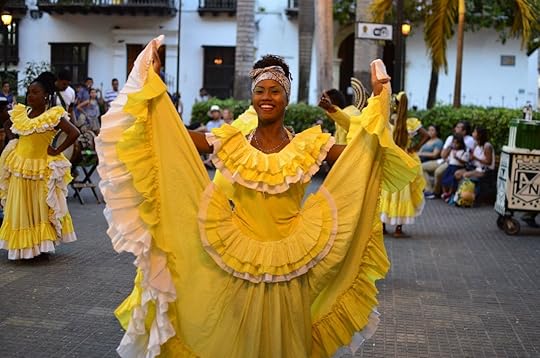
Photo: Carl Forbes/Shutterstock
No sign gets you to make bad decisions better than Scorpio. One look from a deeply passionate scorpion and you know whatever they want you to do is going to be amazing, but you’ll probably regret it later. And if there were ever a country where a Scorpio can find plenty of people willing to follow them down the rabbit hole, it’s Colombia. This beautiful, colorful country has a nightlife culture unrivaled in the western hemisphere, where the greatest night of your life starts at a Medellin nightclub at 1:00 AM and finishes well after sunrise at a downtown penthouse — that you probably rented for $200 for the entire weekend.
Like Scorpios, Colombia is deep and passionate, and it gives off the same dangerous sensuality and sense of adventure. Colombia is perfect for indulging the sexy side where a Scorpio’s mind lives. And for scorpions — to paraphrase the country’s old tourism slogan — the only danger is not wanting to leave.
Sagittarius: See as much as you can on a Mediterranean cruise.
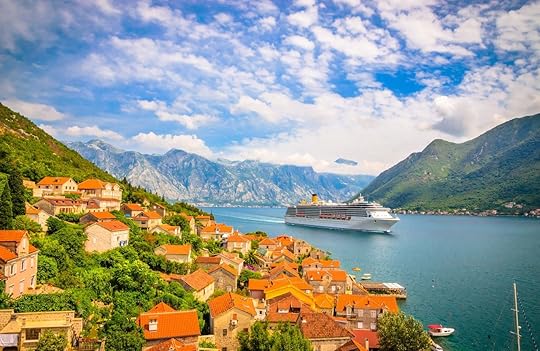
Photo: Olena Z/Shutterstock
You are the ultimate travel sign, Sagittarius, and your list of places to travel is probably longer than you can achieve in one lifetime. But damned if you won’t try. You spend every weekend away from home anyway, so an extended vacation needs to have you hitting as many places as you can in a short period of time. But you still want to learn and grow everywhere you go. A Caribbean cruise might sound perfect, but you’ll get much more out of cruising the med.
No two days are the same on a cruise, so your intense dislike of routine won’t be bothered. You’ll spend one day touring the coastal fortresses in Dubrovnik and the next walking the narrow streets of Santorini. You’ll learn culture in Istanbul and party in Barcelona, learning about a new country every day and expanding your mind like your ruling planet Jupiter demands. Your restlessness will be satiated when you watch the lights from your last port float away, finally returning home with the experience of a dozen vacations under your archer’s belt.
Capricorn: Top the competition in Tokyo.

Photo: Oriol Querol/Shutterstock
You high-achieving mountain goats are all about business and accomplishment, even when you’re on vacation. Wasting away on a beach or exploring a park is a waste of valuable time! You’d rather post up on the top floor of Tokyo’s luxurious Ritz-Carlton, enjoying views out over the busiest city in the world and acting like you own it all, even if you don’t — yet. You’ll also enjoy getting up early to beat the other guy for one of the 120 seats at the famous Tsukiji fish market tuna auction. Or come out on top, again, atop the world’s tallest tower at the 2,080-foot Tokyo Skytree.
A trip to the land of the rising sun gives you the structure you desire with a culture based on work, formality, and achievement, and a work-hard, play-hard attitude that leaves little time for wasteful stuff like sleep. So you can cap off your big day of crushing the biggest city in the world with sake shots and karaoke at Karaoke Kan, where you challenge local suits to see who does a better version of “Heartbreaker.” Tokyo’s a known element, no guesswork or surprises here. And as Japan seems to be the hot country for Americans to visit, you’ll have plenty to talk about at networking events when you get home.
Aquarius: Serve the world building schools in Central America.
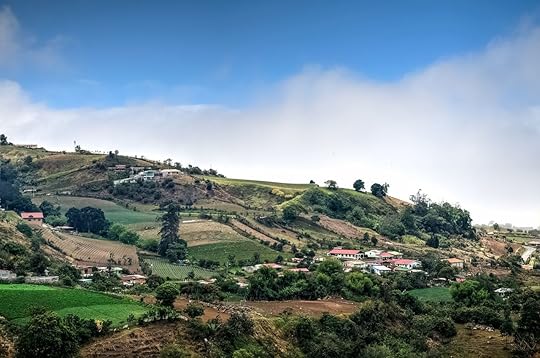
Photo: David Boutin/Shutterstock
Aquarius love to be near the water, but you need more than a nice view and a mani-pedi to make your trip worthwhile. You’re not a mere water-watcher, you’re a water-bearer, bringing much-needed aid to the literally and figuratively thirsty. Your ideal trip means something, allowing you to sit back and smile at how your vacation made a difference in somebody’s life.
Nowhere will you get this satisfaction — as well as your longing to be near the sea — like you will volunteering in Central America. Whether you’re in Costa Rica, Guatemala, or other developing nations, you’ll be able to get the cultural immersion you desire spending time in a rural village. And get the inner satisfaction of service by helping build schools, construct homes, or plant gardens for fresh food. Plus, you’ll have a chance to put your highly sharpened project-management and planning skills to use, giving you your requisite jolt of pride in seeing a project through to completion.
Pisces: Return to the water in the Maldives.

Photo: Sven Hansche/Shutterstock
The ultimate water sign needs to be surrounded by ocean. Or maybe even submerged in it. And while stuff like cruise ships get you up-close and personal with your aquatic home, afternoons lounging on the lido deck don’t quite cut it for your adventurous, swimming spirit. Instead, you need a chain of islands set in the middle of the Indian Ocean that takes literally days to reach. Maldives, meet Pisces.
Here you’ll combine your two favorite things — water and luxurious pampering — as you get massages in a hut hovering over the turquoise ocean. In between your deep tissue rub downs and salt scrubs, you’ll return to your natural form when you strap a tank on your back and dive the clearest waters in the east. You’ll commune with your fellow fish in a state of pure relaxation before diving into some freshly cooked ones back on the beach. 

More like this: The 25 places you need to travel to in 2019
The post Where to travel in 2019, according to your zodiac sign appeared first on Matador Network.

Brazilian desserts you need to try

Brazil is known for its meat-based meals, but the food goes way beyond barbecue. Brazilians know how to end a meal just as well as they know how to grill one. The country’s cuisine is influenced by native cultures, Europeans, and Africans, and nearly every meal is accompanied by a little something sweet. Sometimes that means something simple and fruit-based; other times it means an elaborate pastry made with sweetened condensed milk and loaded with coconut. Often, desserts are variations on Portuguese desserts made with local ingredients. Here are a few of the best Brazilian desserts you need to try.
1. Brigadeiro

Photo: D1 Photography/Shutterstock
Brigadeiros are the most popular Brazilian candy and a big part of every traditional Brazilian birthday party. They’re made of condensed milk, chocolate powder, sugar, and butter, and they’ve been around since 1945. According to legend, the sweet was invented by women who supported the presidential campaign of Air Force Brigadier Eduardo Gomes. The treats took on his nickname: “brigadeiro.” Today, the candy is usually presented in a small ball shape and covered in chocolate sprinkles. Gourmet versions are also available, with fillings that range from berries to crème brulee.
2. Beijinho

Photo: Paulo Dandrea/Shutterstock
A coconut version of the brigadeiro, the beijinho is just as popular at birthday parties in Brazil. The difference between the two recipes is that beijinhos use coconut instead of chocolate powder. After being rolled into small balls and covered in grated coconut, they’re traditionally covered with sugar and clove.
3. Goiabada
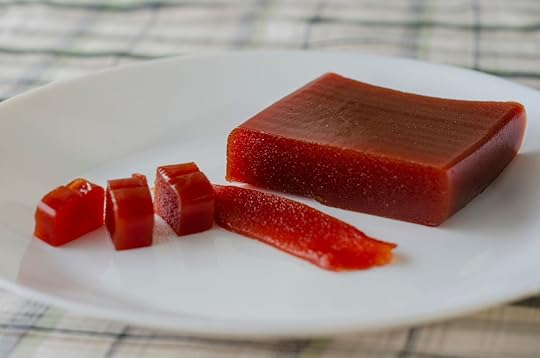
Photo: Roberiofd/Shutterstock
This guava-based candy may not look the prettiest, but it sure is one of the tastiest. It’s made with guava (skin and all) and sugar and formed into a semi-soft, bite-sized candy. It was invented in the state of Minas Gerais by Portuguese colonists as a substitute for traditional Portuguese marmalade, which is made with citrus. The choice of fruit was in part due to the vast amount of guava available in the region. A combination of goiabada with cheese is another popular Brazilian candy called Romeu & Julieta.
4. Quindim

Photo: Alexandre Camilo Bonato/Shutterstock
Quindim is made with egg yolks, sugar, and coconut, and it has an intense, artificial-looking yellow color that may throw you off for a second. It’s based off a dessert popular in Portugal, brisa do lis, which is like an almond flan. Plentiful coconut was substituted for hard-to-find almonds, creating a new dish entirely. Give it a try (the color comes from the amount of egg yolk) because once you taste it, you will surely love it.
5. Queijadinha

Photo: Leo Fernandes/Shutterstock
If you speak Portuguese, you might be fooled into thinking this has cheese (queijo) in it. This Brazilian take on the Portuguese dessert queijada is cheese free, though. Like many desserts in Brazil, queijadinha swaps coconut for other dessert ingredients. In this case, the cheese is subbed out for coconut, and the other ingredients are egg yolks and sweetened condensed milk.
6. Pé-de-moleque

Photo: Vergani Fotografia/Shutterstock
Pé-de-moleque is a type of Brazilian peanut brittle that translates to “brat’s foot.” It’s made with peanuts, milk, and sugar. In the past, it often included rapadura, or unrefined cane sugar, and was known as a tooth-breaker for how solid it was. It’s the candy of choice in June during the month-long celebration of Catholic saints called Festa Junina.
7. Pamonha

Photo: Paulo Vilela/Shutterstock
Pamonhas were created by the indigenous people of Brazil long before colonization, and it’s hardly changed since. Somewhat like a tamale, pamonhas are made with a sweet corn paste wrapped in corn husk. They can be either sweet or savory, the former filled with coconut milk and the latter with meat.
8. Paçoca de amendoim

Photo: Vergani Fotografia/Shutterstock
A staple of the Brazilian June festivities much like pé-de-moleque, this treat is made with peanuts, sugar, and cassava flour. Don’t fret if you’re not in the country in June as it can be found in any supermarket in Brazil at any given time. It’s one of the most typical Brazilian treats available year round and is enjoyed by many on a daily basis. 

More like this: 7 confectionaries every person with a sweet tooth should visit
The post 8 sweet, fruity, and savory Brazilian desserts you need in your life appeared first on Matador Network.

Matador Network's Blog
- Matador Network's profile
- 6 followers



